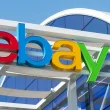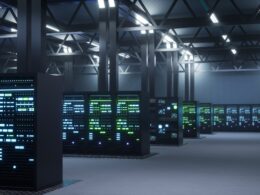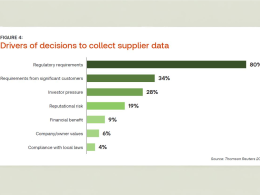In the global push toward decarbonisation and achieving net-zero emissions by 2050, nuclear power is being reevaluated as a pivotal clean energy source. Among the most exciting advancements in this sector is the rise of Small Modular Reactors (SMRs), which promise to overcome some of the traditional hurdles associated with large-scale nuclear plants, such as high upfront capital costs, long construction periods, and public safety concerns.
SMRs, as their name suggests, are smaller and modular versions of traditional nuclear reactors. These reactors, typically with a capacity of up to 300 megawatts (MW), can be factory-built and then transported to their installation sites, offering flexibility and cost savings. Unlike conventional reactors, which are custom-built on-site, SMRs can be scaled according to demand, making them suitable for remote locations or industrial applications where larger nuclear plants might be impractical. These reactors also boast enhanced safety features. Many SMR designs incorporate passive safety systems, which automatically shut down the reactor without the need for human intervention or external power, further reducing the risks associated with operational failures.
A key reason why SMRs are gaining traction is their role in achieving net-zero emissions. SMRs provide reliable, low-carbon baseload power that can complement intermittent renewable sources like solar and wind. As industries and countries phase out coal and natural gas, SMRs can step in to fill the gap. This is particularly relevant in locations where renewable energy integration is difficult or where energy-intensive industries, such as hydrogen production or district heating, require a constant, stable power supply. SMRs can also be deployed alongside other clean energy technologies, helping create a more resilient and sustainable energy system.
The development of SMRs is still in its early stages. While many designs have been conceptualised, only a handful of projects have reached the advanced stages of regulatory approval or commercialisation. The International Atomic Energy Agency (IAEA) has identified over 80 SMR designs under development globally, but significant challenges remain. These include financial hurdles, regulatory complexities, and technical obstacles. Nevertheless, the global market for SMRs is expected to grow significantly by 2030, driven by advancements in design and increasing governmental support.
Among the organisations supporting SMR development are the International Energy Agency (IEA) and the World Nuclear Association (WNA), both of which facilitate international cooperation and promote knowledge sharing among member states. According to the IEA, nuclear energy, including SMRs, will play a crucial role in achieving global climate goals. The IEA’s Net Zero Emissions by 2050 scenario envisions nuclear capacity doubling by mid-century, with SMRs contributing a significant share of this expansion. The flexibility, safety, and scalability of SMRs make them particularly well-suited for this task.
The Intergovernmental Panel on Climate Change (IPCC) also supports the role of nuclear power, including SMRs, in limiting global warming to 1.5°C. In its 2018 report, the IPCC examined 90 emission-reduction scenarios, all of which highlighted the need for nuclear energy expansion. According to the IPCC, global nuclear capacity must grow from 394 gigawatts in 2020 to 1,160 gigawatts by 2050. SMRs are expected to play a key role in this growth, particularly in decarbonising energy-intensive industries and providing reliable power to remote or hard-to-reach areas.
Several startups are leading the charge in SMR development. NuScale Power, based in the United States, is one of the most advanced companies in this field, having received design approval from the U.S. Nuclear Regulatory Commission. NuScale is backed by Fluor Corporation and receives funding from the U.S. Department of Energy (DOE). Kairos Power, another U.S. company, is developing a fluoride salt-cooled reactor and has attracted investments from Bill Gates and Berkshire Hathaway Energy. Terrestrial Energy from Canada is focusing on its Integral Molten Salt Reactor (IMSR), with support from the Canadian government. Meanwhile, Oklo, a U.S. company, is pioneering microreactors and has secured power purchase agreements with major data centre operators like Equinix. The UK-based Rolls-Royce SMR division, supported by both private investment and UK government funds, is also advancing its SMR program with ambitions for widespread deployment by the early 2030s.
Backing from institutional investors has been crucial in accelerating SMR development. The Qatar Investment Authority (QIA), one of the world’s largest sovereign wealth funds, has invested heavily in Rolls-Royce SMR. Breakthrough Energy Ventures (BEV), co-founded by Bill Gates, is another key investor in SMR technology, supporting companies like TerraPower. Berkshire Hathaway Energy, through its energy subsidiary, has backed Kairos Power, and BlackRock, along with other private equity firms, is reported to be exploring nuclear investments, including SMRs, as part of its sustainable investment strategies. Legal & General, a UK-based insurance and asset management firm, has also invested in Rolls-Royce’s SMR program, recognising the long-term potential of the technology in decarbonising energy systems.
Corporate giants are also getting on board with SMRs as part of their clean energy commitments. Google has signed an agreement with Kairos Power to purchase carbon-free electricity from SMRs, a deal that aims to provide 500 MW of power to Google’s U.S. data centres by 2030. Microsoft, too, has entered the SMR space by partnering with Constellation Energy to restart the Three Mile Island nuclear power plant, which will supply 837 MW of clean energy to Microsoft’s global data centres by 2025. Amazon, through its cloud division AWS, has also shown interest in nuclear energy, securing a data centre campus connected to the Susquehanna Steam Electric Station nuclear plant in Pennsylvania.
Despite the optimism surrounding SMRs, the technology is not without its critics. One of the main concerns is the high cost of developing and deploying SMRs. The Institute for Energy Economics and Financial Analysis (IEEFA) argues that the resources dedicated to SMRs might be better spent on proven, cost-effective renewable energy technologies like solar and wind. Some experts, such as those from the Australian Academy of Technological Sciences and Engineering (ATSE), advise waiting until the 2040s for a more mature SMR market before investing heavily, citing the lengthy development timeline and uncertain commercial viability. Additionally, public safety and environmental concerns persist, especially regarding the disposal of radioactive waste and the potential for nuclear accidents.
Rajesh Chhabara, Managing Director at sustainability consulting firm CSRWorks International in Singapore, explains, “Small Modular Reactors (SMRs) represent a promising solution in the transition to net-zero emissions, particularly for industries and regions where renewable energy integration is challenging. Their flexibility, scalability, and low-carbon footprint make them an attractive option for complementing renewables. However, it is essential that as we advance this technology, we remain committed to addressing concerns about safety, costs, and waste management to ensure that SMRs contribute to a truly sustainable energy future.”
In conclusion, Small Modular Reactors are a promising technology with the potential to significantly contribute to global decarbonisation efforts. Their flexibility, enhanced safety features, and ability to complement renewable energy make them an attractive option for governments and corporations alike. However, challenges related to cost, regulatory hurdles, and public perception remain, and these will need to be addressed for SMRs to achieve widespread adoption. For business leaders, keeping a close eye on SMR developments and partnerships will be essential as the technology continues to mature and as the world transitions toward a net-zero energy future.





















